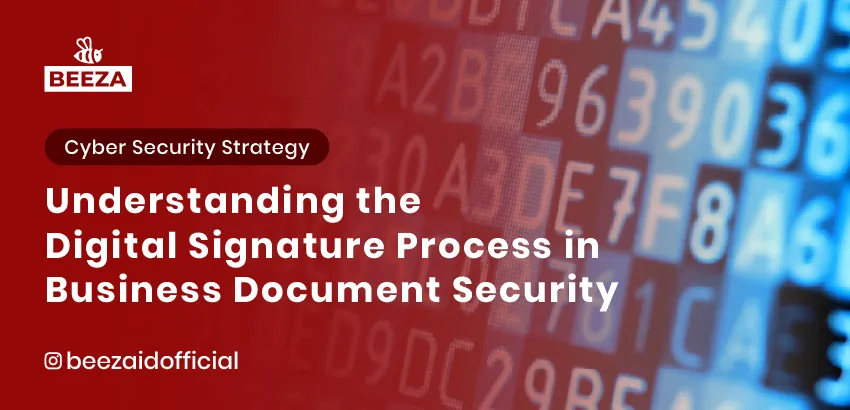
In today’s digital era, the need for efficient and secure document management is becoming increasingly vital. One technology gaining widespread adoption across industries is the digital signature. It enables organizations to verify document authenticity and integrity without relying on slow, manual processes. However, many business leaders still don’t fully understand how digital signatures work or how they contribute to document security. This article explains the digital signature process, its benefits, and includes real-world case studies from leading organizations.
What Is a Digital Signature?
A digital signature is an electronic authentication method that uses public-key cryptography (Public Key Infrastructure/PKI) to verify that a digital document was created and sent by an authorized source and has not been altered in transit. Unlike handwritten signatures that can be forged or modified, digital signatures add a highly secure, verifiable layer to documents.
Two essential components are involved:
- Private Key: Used by the signer to create a signature.
- Public Key: Used by the recipient to verify that the document is authentic and unaltered.
How Does a Digital Signature Work?
- Hashing the Document
The document’s content is converted into a unique hash (a digital fingerprint). Even the slightest change in the document will result in a completely different hash value. - Encrypting the Hash with the Private Key
The signer uses their private key to encrypt the hash, creating the digital signature. - Sending the Document with the Signature
The digitally signed document and the encrypted hash (signature) are sent to the recipient. - Verifying with the Public Key
The recipient uses the signer’s public key to decrypt the digital signature and generates a new hash from the received document. If both hash values match, it confirms the document is authentic and hasn’t been tampered with.
Key Benefits of Digital Signatures in Business
- Enhanced Document Security
Digital signatures ensure the document hasn’t been altered after signing. This is critical for contracts, financial reports, and other sensitive materials. - Faster Business Processes
Digital signatures significantly speed up approval workflows—especially for businesses operating across regions or borders—eliminating the need for printing, shipping, and manual confirmation. - Legal and Regulatory Compliance
Digital signatures are legally recognized under regulations such as Indonesia’s ITE Law, Europe’s eIDAS, and the U.S. ESIGN Act. They help businesses remain compliant with digital transaction standards. - Transparent Audit Trails
Every digital signature includes a detailed timestamp, signer identity, and device information, creating a transparent and verifiable audit trail. - Supports a Paperless Office
Digital signatures reduce reliance on paper, printing, and scanning, aligning with sustainability goals and improving operational efficiency.
Real-World Case Studies: How Companies Use Digital Signatures
📡 Telkom Indonesia
Telkom Indonesia implemented digital signatures within its internal e-office system to digitize administrative workflows. As a result, document turnaround times improved significantly while reducing manual errors and paper use.
🏦 Bank Mandiri
In their digital onboarding process, Bank Mandiri uses digital signatures to securely authorize customer agreements. This allows customers to open accounts completely online, with legally binding documentation.
🛍️ Tokopedia
As one of Indonesia’s leading e-commerce platforms, Tokopedia utilizes digital signatures for partnership contracts and internal approval processes. The result: faster vendor onboarding and smoother interdepartmental workflows.
Challenges and Solutions
Despite the advantages, some challenges remain in the adoption of digital signatures:
- Limited user understanding of how digital signatures work.
- Difficulty integrating with legacy systems.
- Uncertainty around legal acceptance in certain sectors.
To overcome these challenges:
- Choose a certified digital signature provider officially recognized by government regulators.
- Provide internal training to ensure proper adoption and understanding.
- Integrate digital signature platforms with existing business software (e.g., ERP or document management systems).
Conclusion
Digital signatures are more than just modern tools—they’re essential for ensuring document authenticity, legal validity, and operational efficiency in an increasingly digital business landscape. As more organizations digitize their workflows, adopting digital signatures is a strategic move to stay secure, agile, and compliant.
💡 Want to implement digital signature technology in your business? Contact Beeza for secure, government-compliant digital signature solutions tailored to your operational needs.